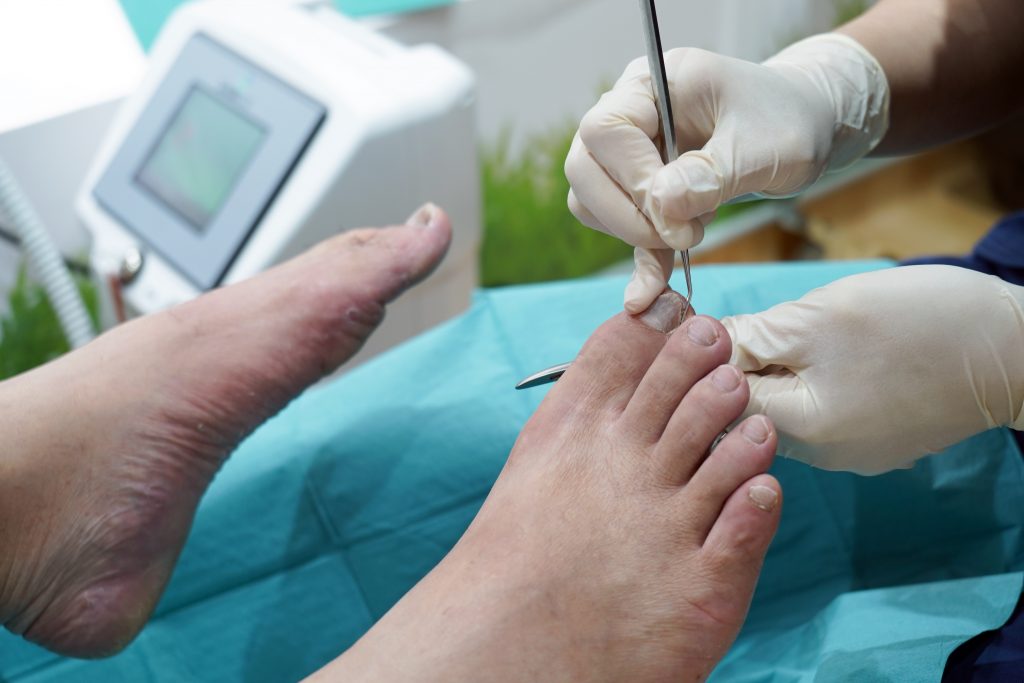
A Comprehensive Guide to Medical Pedicures: Healthy Feet From The Ground Up
- October 10, 2023

Renee Lee
PRINCIPAL PODIATRIST
Atlas Podiatry
Renee Lee graduated in 2014 from the University of Western Australia with a Bachelor of Podiatric Medicine under the Singapore General Hospital Scholarship Award.
Renee Lee enjoys all aspects of Podiatry, with special interests for diabetic foot and wound care, biomechanical and musculoskeletal injuries, blister treatment and ingrown toenail management.
- Podiatry
- Reading Time: 3 minutes
Share with others
Your feet are the foundation of your body, and taking care of them is essential for your overall well-being. While regular pedicures can enhance the appearance of your feet, a medical pedicure takes foot care to a whole new level. In this article, we will delve into the world of medical pedicures, exploring what sets them apart from regular pedicures, when to consider getting one, and much more.
What is a Medical Pedicure?

A medical pedicure, also known as a medical-grade pedicure, is a specialized foot care service performed by qualified podiatrists in a sterile medical environment. Unlike a regular pedicure in Singapore, which focuses primarily on aesthetics, a medical pedicure prioritizes the health and well-being of your feet.
During a medical pedicure, a podiatrist would assess the skin, nails, and overall foot health before tailoring the treatment to address specific needs. This may involve techniques to prevent ingrown toenails, nail fungus, and the removal of calluses or corns. Additionally, the podiatrist provides education on preventing and managing foot-related issues.
How Does it Differ from a Regular Pedicure?
While both regular and medical pedicures aim to promote foot health, they differ significantly in their approach and execution.
A regular pedicure is primarily cosmetic, performed by a pedicurist in a standard salon setting. It focuses on enhancing the appearance of the skin and nails.
On the other hand, a medical pedicure in Singapore is performed by a podiatrist in a private, sterile room. The emphasis is on hygiene, medical-grade sterilization, and addressing potential foot problems. A comprehensive assessment of the feet is conducted to ensure any underlying issues are identified and treated.
When Should You Consider a Medical Pedicure?
One need not have a specific foot condition to benefit from a medical pedicure. It can be sought after for overall foot health and well-being. However, there are certain situations where a medical pedicure is particularly beneficial, such as:
- Recurring ingrown toenails
- Fungal toenails
- Unattractive or problematic toenails (e.g., thickened, split)
- Painful calluses or corns
Especially for individuals with diabetes, autoimmune diseases, or cancer, regular medical pedicures are recommended to minimize the risk of cuts or infections and to maintain optimal foot health.
How Often Should You Get a Medical Pedicure?
The frequency of medical pedicures depends on individual needs and the condition of your feet. As a general guideline, most patients find it beneficial to schedule a medical pedicure every 6-8 weeks for ongoing foot health maintenance.
Is the Procedure Covered by Insurance?
Whether a medical pedicure is covered by insurance depends on the specific policies of your insurance provider. It is advisable to contact your insurance company directly to inquire about coverage and any potential limitations within your policy.

A medical pedicure offers more than just cosmetic enhancement. It provides a comprehensive approach to foot care, focusing on hygiene, prevention, and treatment. Whether you have specific foot concerns or simply want to maintain healthy feet, a medical pedicure performed by a qualified podiatrist can be a transformative experience. Prioritize your foot health, and step confidently towards a healthier, pain-free future.
Article reviewed by Ms. Renee Lee, Principal Podiatrist at Atlas Podiatry.






